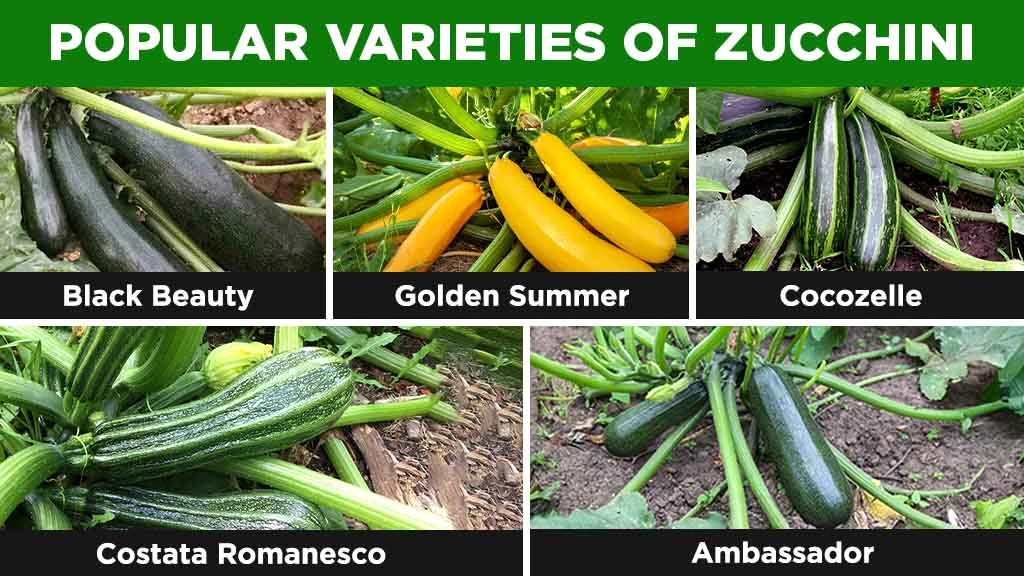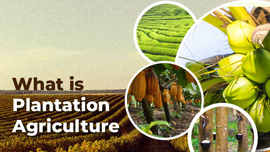
Table of Contents
- Introduction to Zucchini Farming
- Popular Varieties of Zucchini
- Steps to Zucchini Farming in India
- Is Zucchini Farming Profitable in India?
Introduction to Zucchini Farming
Zucchini, also referred to as courgette, is a summer squash in the gourd family (Cucurbitaceae). Zucchini was first domesticated in Mesoamerica (central Mexico to northern Costa Rica) about 7000 years ago and later became a popular fruit in Europe. It found its way onto Indian land through international trade. Today, zucchini is a famous vegetable used in a variety of cuisines around the world. Zucchini's versatile flavour profile and texture allows it to be used in both sweet and savoury dishes. Zucchini farming is also gaining traction in many parts of India, particularly in North India and the states of Assam and Haryana.
Popular Varieties of Zucchini

|
Variety |
Feature |
|
Black Beauty |
Dark green skin, fast growing, high yield. |
|
Golden Summer |
Bright yellow fruit, sweeter taste, tender texture, good for salads. |
|
Cocozelle |
Light green with dark stripes, early maturing, rich flavour, open bush plant, resilient to high temperature. |
|
Costata Romanesco |
Italian heirloom variety, heavily ribbed, grey-green, star-shaped fruit, firm texture. |
|
Ambassador |
Hybrid variety, rich medium green skin, smooth glossy skin, white crisp flesh. |
Steps to Zucchini Farming in India
Here are some of the most important steps to take for successful zucchini production and harvesting:
Ideal Climate
Zucchini is mainly grown during the warmer months of the year which are March through June. It is a summer crop that requires up to 4-6 hours of sunlight each day and an optimal temperature ranging from 18°C to 24°C. As a result, the best place to plant zucchini is in an area with plenty of sunlight.
Soil Requirement
Zucchini can be grown in a variety of soils, but they thrive best in well-drained, fertile loamy soils with a pH of 6.0-7.0. The soil should be high in organic matter. These plants grow quickly and require a lot of rich, nutrient composted soil or aged manure for proper development. Use only balanced organic fertilizers and test your soil every few years to ensure it’s healthy and well balanced.
Low-laying fields should be avoided. Early seed sowing can be done on light soil, whereas heavier soils are better suited to planting that will be produced later in the season.
Seed & Spacing
The seed rate for zucchini is 1-1.25 kg/per acre. The seed are sown in the last week of February or the beginning of March. Zucchini plants are spaced about 1-metre apart, with 500 to 900 mm between plants in a row. This yields 7500 to 11000 plants per hectare. A second approach involves sowing double rows of plants 750 mm apart, with a pathway of around 1.4 meters between pairs of rows. And direct sowing seeds in level ground 1 inch deep and 2 -3 inches divided.
Fertilizer Management
Zucchini plants are heavy feeders and require well-balanced fertilisation for the best result. If you want your zucchini to grow organically, mix compost or well-rotted manure before planting. Apply 1.5 to 2 quintals FYM during field preparation, with an NPK dose of 25 kg per acre. In the later stages of growth, 20 kg must be distributed in four doses utilising the therapeutic irrigation approach. After pollination, drip irrigation is used to administer the NPK ratio of 13:0:45.
Irrigation
Zucchini plants require frequent and consistent watering during the growing season. First watering should be done immediately after sowing or planting. After that, irrigate once a week in the summer. Providing hydration whenever the top inch of soil gets dry. Typically, aim for 1 to 1.5 inches of water every week, adapting according to the weather. Lessen the frequency during rainy season. Adequate hydration during the early growing period ensures healthy zucchini seedlings and strong plant growth. Avoid watering during fruit maturation. If you want to keep your water supply in good condition, drip irrigation is the ideal option.
Pest & Disease Control
Protecting zucchini plants is essential for a successful harvest. Diseases and pests in zucchini plants can lead them to produce significantly fewer fruits or cause the plant to wither early. Aphids, whiteflies, and squash vine borers are among the most common pests. These pests can be controlled with regular monitoring and the application of neem-based pesticides. Powdery mildew, downy mildew, and bacterial wilt are all prevalent diseases that can be managed by crop rotation, adequate plant spacing, and the use of disease-resistant varieties. Avoid overhead watering and remove diseased plants as soon as possible to help prevent the disease from spreading further.
Harvesting Zucchini
Zucchini are best harvested when young and tender. Most zucchini varieties are available for the first pick about 40 to 50 days after planting. When the fruit is 3-7 inches long, cut it off with clean scissors or pruners. Zucchini is an annual plant, which means it only has one growing season, which can last anywhere from 90 to 150 days depending on location, growing conditions, and variety. Fresh zucchini has a rather short shelf life. So, if you want to keep them for longer, cut them off with at least an inch of their stems still attached.
Is Zucchini Harvesting Profitable in India?
Zucchini farming is the latest farming trend that has taken Indian farmers by storm. The fruit's appeal among Indian farmers stems from its high profit margin, significant health benefits, and higher yield than other crops. When managed efficiently and strategically, Zucchini farming and harvesting is a profitable venture.


Related Blogs












